The HiLux is so popular in Australia I reckon Toyota could release a life-sized cardboard cut-out version of the ute, sell it for $55,000 a pop and a shedload of ’Lux lovers would actually put an order in for one.
Yep, it’s popular. But Toyota pushes the boundaries of brand loyalty in that it seems to consistently only do the bare minimum to keep buyers coming back for more.
Well, thankfully, the car maker has finally decided to bring the HiLux into this new decade with some decent changes, including new much-needed tech (Apple CarPlay, Android Auto, and, wait for it, a bloody digital speedo!), an upgraded engine with power and torque increases, as well as a styling refresh of sorts.
The ute realm of the market remains hotly contested, so has this raft of HiLux mods been enough to keep it relevant and competitive? Read on.
Toyota Hilux 2021: SR (4X4)
| Engine Type | Diesel Turbo 4, 2.8L |
|---|---|
| Fuel Type | Diesel |
| Fuel Efficiency | 7.8L/100km (combined) |
| Seating | 2 |
| Price From | $41,140 - $48,400 |
| Safety Rating |
|
Does it represent good value for the price? What features does it come with?
7 / 10
The Toyota HiLux remains one of Australia’s favourite utes but Toyota has let it slide behind its rivals in terms of overall comfort and drivability.
.jpeg)
However, this new HiLux has benefited from high-value increases in power and torque, driver-assist technology, as well as a bigger multimedia screen and those have been easily significant enough to keep it front of mind with buyers.
It is unashamedly purpose-built for work and the SR-spec extra-cab is well-suited to job-site duties.
Is there anything interesting about its design?
7 / 10
The HiLux front end has a bulkier, more pronounced look about it now, resulting in a bit more overall presence.
Inside, changes are limited to that new aforementioned 8.0-inch multimedia screen and a new 4.2-inch driver-info screen.
.jpeg)
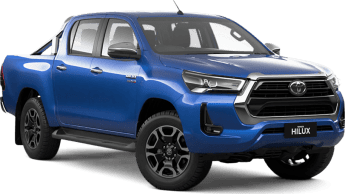
What are the key stats for the engine and transmission?
7 / 10
The HiLux’s power plant is an upgraded 2.8-litre four-cylinder turbo-diesel engine, producing 150kW at 3400rpm and 500Nm at 1600-2800rpm – those are increases of 20kW and 50Nm over the previous HiLux. And those rises yield substantial improvements in terms of all-all-round drivability.
Our test vehicle has a six-speed automatic transmission.
.jpeg)
How practical is the space inside?
8 / 10
The HiLux cabin is an easy space in which to swiftly become comfortable. The layout has a nice familiarity about it.
Seat fabrics are described as “premium” but they retain that rough and ready feel about them – which is fine – and expanses of hard plastic surfaces are there to endure whatever work and life can throw at them.
.jpeg)
The floor is topped with vinyl and rubber mats in our test vehicle.
And, while not flashy, the interior feels more than capable of copping the rigours of daily life and providing suitable levels of comfort while doing so.
All controls are easy to locate and operate – dials or buttons as per most Toyota cabins – and the HiLux now benefits from its new bigger multimedia screen and the 4.2-inch driver-info screen.
.jpeg)
Storage spaces upfront include glovebox, centre console with lid, dual cupholders in between driver and front-seat passenger, pop-out outboard cup holders and door pockets big enough for a water bottle as well as a variety of work debris.
Rear-seat passengers each get a ‘bits and pieces’ receptacle (big enough for a 600ml water bottle) in their nearest door and map pockets in the seat-backs in front of them. There are also shallow under-seat storage bins.
.jpeg)
Charging options are limited in that you get a USB port and it has a tiny rubber cover that’s annoying.
Front seats are as comfortable as you’d expect in a mid-spec ute; the rear seats are better left to children and even then for short trips only.
What's it like to drive?
7 / 10
The HiLux is better to drive than it was before, but it’s still a fair way behind the likes of the VW Amarok and Ford Ranger in terms of all-round drivability and comfort, especially in extra-cab guise.
This 4x2 variant is on heavy-duty work-ready suspension so you wouldn’t expect it to offer up the most comfortable ride around but unladen, when utes are typically at their worst, this HiLux is not as firm as we’ve all come to expect in a utility vehicle. It’s a subdued firmness rather than a harsh jolting experience as it has been in the past.
This wasn’t a load test so I didn’t throw anything in the tray more substantial than camping and vehicle-recovery gear I was loaning to a mate – so about 200kg in one load. Basically, I drove this HiLux unladen over a seven-day period and doing that is not as punishing an experience as it would have been in previous versions of this ute.
.jpeg)
That’s not to say it’s vastly improved though. The rear end skips along over irregular surfaces and then jolts and jars through more pronounced holes and bumps. Ah, the dubious joys of (unladen) ute ownership.
As mentioned earlier, Toyota claims to have upgraded the HiLux suspension (double wishbone front and leaf-spring rigid-axle rear), with among other things “revised shock-absorber tuning, new bushings and improved leaf-spring design” but whether that’s fully proven its worth in this is difficult to judge – but, yes, ride and handling have improved though.
The most noteworthy change this time, however, is the engine’s upticks in power and torque. It’s turned an at-times laggy, thrashy vehicle into, er, less of a laggy, thrashy vehicle. Nah, only kidding. It is markedly better, with plenty of urge at the tap of your right foot, whereas the previous HiLux could be quite lacklustre.
The six-speed auto generally works well and the transmission thrashiness of the past has been mostly reined in.
.jpeg)
In terms of measurements, the HiLux is 5325mm long with a 3085mm wheelbase. It is 1855mm wide, 1810mm high and has a listed kerb weight of 1920kg.
It’s good to know that, even though it’s a 4x2 variant, this HiLux has ground clearance enough (216mm) to clear any job-site obstacles and wading depth enough (700mm) to get through mud puddles.
It has an 11.8m turning circle.
Steering is a lot more tuned-in here than in previous versions, especially at lower speeds, and some of that may be attributed to its new variable-flow power steering. It feels lighter and more precise at all speeds, although there is some ‘play’ to it at higher speeds.
For those of you into rims and rubber – and I know there are plenty of you out there – the HiLux rides on 17-inch black steelies, shod with Bridgestone Dueler A/Ts (265/65R17), a perfectly agreeable mix for daily driving duties split between bitumen roads and job-site dirt tracks.
.jpeg)
The extra-cab’s tray is 1840mm long, 1540mm wide (1109mm between the wheel arches), and 480mm deep. It has tie-down points at each corner.
This 4x2 extra-cab diesel HiLux variant has a towing capacity of 750kg (unbraked) and 2800kg (braked). Payload is listed as 1130kg.
How much fuel does it consume?
8 / 10
It has a claimed fuel consumption of 7.5L/100km.
Our actual fuel consumption on test was 8.0L/100km. Like I said, no load-carrying or towing this time around – keep an eye on CarsGuide for those tests in the not-too-distant future.
It has an 80-litre fuel tank.
.jpeg)
Warranty & Safety Rating
What safety equipment is fitted? What safety rating?
8 / 10
The Toyota HiLux line-up has a five-star ANCAP safety rating in accordance with 2019 standards.
Standard safety gear includes seven airbags (dual front, front side, driver’s knee and full-length curtain), and AEB, which is operational between 50km/h-180km/h, and with pedestrian and cyclist detection at speeds between 10km/h-80km/h.
It also has high-speed active cruise control, lane departure alert and road sign assist), and reversing camera.
What does it cost to own? What warranty is offered?
7 / 10
The Hilux is covered by a five-year/unlimited kilometre warranty and seven years/unlimited km powertrain warranty, as long as you stick to the servicing schedule. Servicing is set at six months/10,000km intervals. Average cost per service is $250.
Verdict
The Toyota HiLux remains one of Australia’s favourite utes but Toyota has let it slide behind its rivals in terms of overall comfort and drivability.
However, this new HiLux has benefited from high-value increases in power and torque, driver-assist technology, as well as a bigger multimedia screen and those have been easily significant enough to keep it front of mind with buyers.
It is unashamedly purpose-built for work and the SR-spec extra-cab is well-suited to job-site duties.
Pricing Guides



.jpeg)

.jpg)
.jpg)



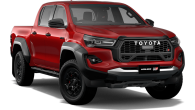
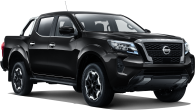

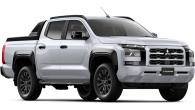


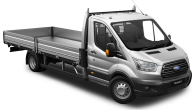
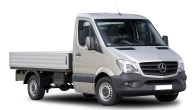





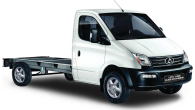




.jpg)
.jpg)
_3.webp)

.jpg)

.jpg)



.jpg)
Comments